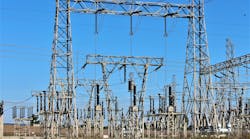After a particularly violent storm, as I was thanking some of the outside crews who had come to help us, one of these linemen said something profound that gave me true insight into the people with whom I work. He said, “When you have a big storm like this, you don't ever have to worry about your linemen not working. We all live to see the lights come on.”
In those few words, this man described the feeling of motivation, full engagement and passion about his work. Any veteran utility worker knows this feeling, because sooner or later, we all work the big storms.
In restoring power to our communities, many of us find the greatest job satisfaction. We go home dirty and exhausted but exhilarated by both challenge and success. Is it possible to have this level of engagement and passion daily? I think so. The people who first brought electricity to this country felt this way about their work, and today, we have the example of storm work.
What makes restoration work so uplifting? The magnitude of the needs of our customers and communities break down the barriers that inhibit our normal work. We are an industry of specialization. But specialization can lead to silos of work and information, and can separate us from each other and from the importance of what we do, which is to serve the needs of our customers and communities.
When we forget that our work is more than just a job, the intensity of storm work forces collaboration and makes us all realize the importance of our organizations to the lives of the people we serve. Too many people depend upon what we do to give them better lives. We bring comfort, convenience and jobs to our communities, and it shouldn't take a major outage to remind us of this.
If we want our people to derive a storm-like satisfaction and sense of significance on a daily basis, those of us in leadership must take responsibility for creating a corporate culture that calls out their best. If we want people to be smart, hardworking and committed to their work, then we need to treat them accordingly.
After nine tornadoes struck our system in a 16-hour period, we brought in hundreds of line and tree workers. We worked them and everyone in our company for 10 days solid. Vice presidents organized laundry and arranged meals for about 1,900 people. IT managers unloaded truckloads of water. Accountants cleaned up oil spills. Lawyers cleaned tables, served food and arranged hotel rooms. Everyone answered phones. And as always, our managers and supervisors worked around the clock. You don't bring in extra managers and supervisors, you depend on the people you have to work as long as it takes.
So, what are the lessons? First, those of us in leadership must know that our job is to support the people who do the work — to remove obstacles, provide the best tools and equipment we can afford, and manage their work to secure the greatest impact in the least time. We manage their strength for the long haul, ensuring they are rested and properly fed, and directed to the right places to get the largest number of people on at any given time. And if we are worth our salt, we keep them informed about progress and keep up their enthusiasm.
Whether on a daily basis or in a storm, our organizational structure must not inhibit the flow of work or information, and fear of hierarchy must be removed to ensure universal respect for all the people with whom we work. Any organization that has “big” and “little” people, or that thinks some jobs are “just entry level,” isn't going to perform at a high level over time.
Storm work is complex and difficult, and that's good. People need challenging work to develop both good judgment and commitment. Often, we dumb down the daily work in the quest for accuracy and conformity, and that is all we get. No one can be deeply engaged in a boring job or in work that the boss thinks is unimportant.
In a storm, we engineers and managers don't “get the lights on” unless we get our crews to the right place with the right skills and tools. The tools we need to do that — computers, software and tightly integrated systems — cost a great deal, but they enable us to change how we work and interact with each other every day. As we apply complex technologies, we can integrate not just the software systems, but through teamwork and collaboration, we can work to develop a culture that unites everyone in the company behind corporate objectives.
We are fortunate to be working in times when interesting, new technologies are available to our industry and when the needs of our customers are driving us to improve reliability and customer service. That challenge can motivate and engage people if leadership will remove political and organizational barriers, and provide a simple line-of-sight to the value our customers and communities get from our work.
Harold DePriest, an engineer by training, is the president and CEO of EPB, the municipally owned electric power distributor in Chattanooga, Tennessee, U.S.

